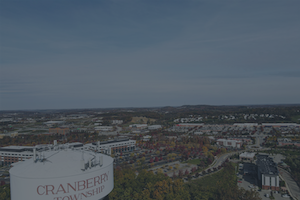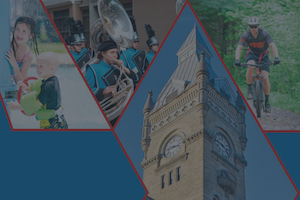Sensory-friendly events: What are they and who are they for?
Cranberry Township’s annual Great Pumpkin Festival this year had a sensory hour meant to give children with additional needs a chance to enjoy the event at their own pace.
This is just one example of an event taking considerations for youths who may not be able to enjoy an activity the way most other children do, but these measures are becoming more common around the county, according to a nonprofit leader.
Christin Saumure, co-founder and president of Growing Together: The Friendship Factory, said she, as the mother of a son with autism, advocated for the Great Pumpkin Festival to include the sensory hour. She said the idea behind events being sensory-friendly is to give an avenue for children like hers to enjoy activities that requires little to no changes to an event itself.
As she explained, a dedicated period at the beginning or end of an event could be enough to make an event more comfortable for people with sensory needs.
“Ensuring that lines are well managed and that the flow of people is intentional can make a meaningful difference in helping everyone stay regulated and comfortable,” Saumure said. “A simple activity, like coloring, can be made more inclusive by providing dot markers, stickers or larger crayons, in addition to traditional supplies. These small adjustments can make a big impact in accessibility and participation.”
Growing Together recently had its own event aimed specifically at families with members with such needs — its first Friendship Fall Festival.
Part of the nonprofit’s mission is to bring special needs into the public forum to inform people through exposure. Laura Oliverio, treasurer of Growing Together, said the fall festival was a way to bring children of all needs and abilities to one place, to get rid of any separation between them.
“Just as part of our mission is to foster recreational opportunities, social opportunities, and have those things exist in our communities, we wanted to have something in the fall,” Oliverio said.
All children, including those with special needs, are different, Saumure emphasized, but there are a few changes that can make an event sensory-friendly or can simply contribute to an environment more children will feel comfortable in. These changes include smaller group sizes, less harsh lighting, quieter spaces and providing toys or materials a person can use to help moderate their moods.
Saumure said that some of the ways the organization made its fall festival more friendly to the senses could have gone unnoticed to the general public.
“For our fall fest we plan on having a calming corner, which isn’t near the food, it’s set aside so there is less activity,” Saumure said. “We bring noise-canceling headphones. We bring fidgets, pods that can offer compression for the kids to sit in and kind of cool off there.”
Ashley Veres, co-founder and secretary of Growing Together, said some children become overstimulated when there is too much noise or too much going on around them. So spreading out activities in an event could also make a big difference in how a child experiences it.
“A lot of us, we don’t realize when we walk into a store, there is music playing, customers talking. We are able to funnel all that out, but our kids often cannot,” she said. “You can have an event that’s open to the public, but just having a space where they can go so they can still participate in the event.”
In addition to lowering the volume, Saumure said an event or space can be more sensory-friendly by having people in attendance who are geared toward communicating.
“Ideally, there should also be multiple means of communication available. Some of our friends have limited verbal abilities,” Saumure said. “Some bring communication devices, while others use PECS (Picture Exchange Communication System) or alternative communication systems. Being open to these communication methods allows every friend to have their voice heard — and they absolutely do have voices.”
And these changes still allow people and children who don’t have special needs to enjoy a function. Veres said the introduction of neurotypical children to events like these could lead to more events, in general, becoming sensory friendly.
“We want kids with needs and kids from the community to be together,” Veres said. “It’s helping those neurotypical kids and families learn more about those kids who are neurodivergent.”
While Growing Together is organizing its own events that cater to specialized needs, its administrators said they encourage any organization planning events to consider some special needs when planning.
Oliverio said she has been able to make do at certain events she attends with her daughter, who is autistic, but any event that includes sensory considerations is appreciated.
She added these considerations are becoming more common.
“It has been a slow but steady increase in the number of activities that are sensory-friendly from beginning to end, or a sensory-friendly hour,” Oliverio said. “Us parents, we’ll take what we can get. If you can not blast the music for an hour, that would be great.”
Veres, too, said the number of events that have some inclusive aspects to them is increasing. She said this could be from parents like her, Saumure and Oliverio speaking and sharing more about their own children, which seems to have had a ripple effect in Butler County.
“Just having other community members and friends who know the needs of my child helps foster that acceptance,” Veres said. “In the Friendship Factory’s case, we try to have a space large enough for people to be accepted. We want to build champions of inclusion.”
The three administrators of Growing Together said these changes likely won’t happen overnight, as it has taken years for sensory-friendly and inclusive events to become visible to the general public, including in Butler County. However, Saumure said, even small steps are helpful to her and children like hers.
“We want to help to just continue bringing people along, offer suggestions,” Saumure said of people interested in becoming more sensory-friendly. “Helping others understand differences, improving interactions with people of varying abilities and creating space for those differences to simply be OK.
“That understanding and acceptance from the community at large can make an enormous impact on inclusion and belonging.”










